
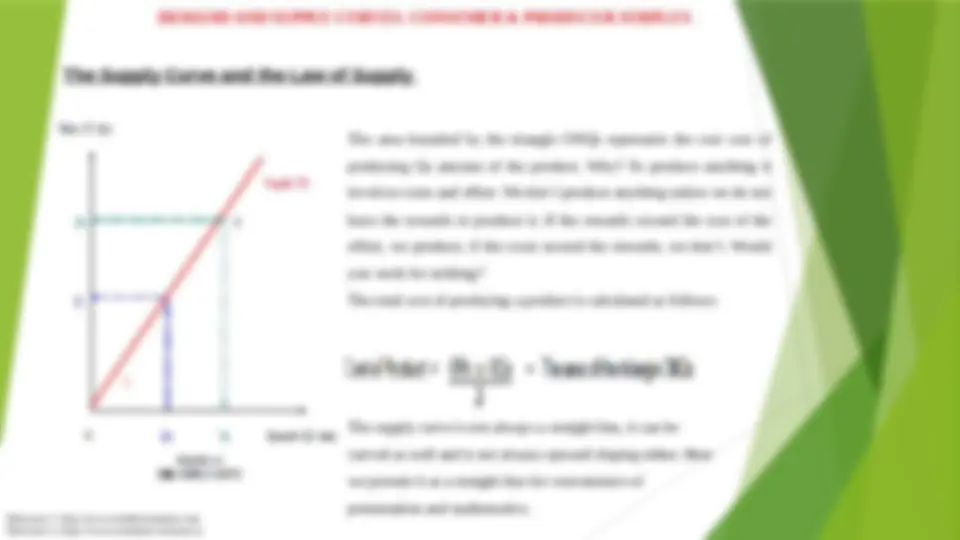
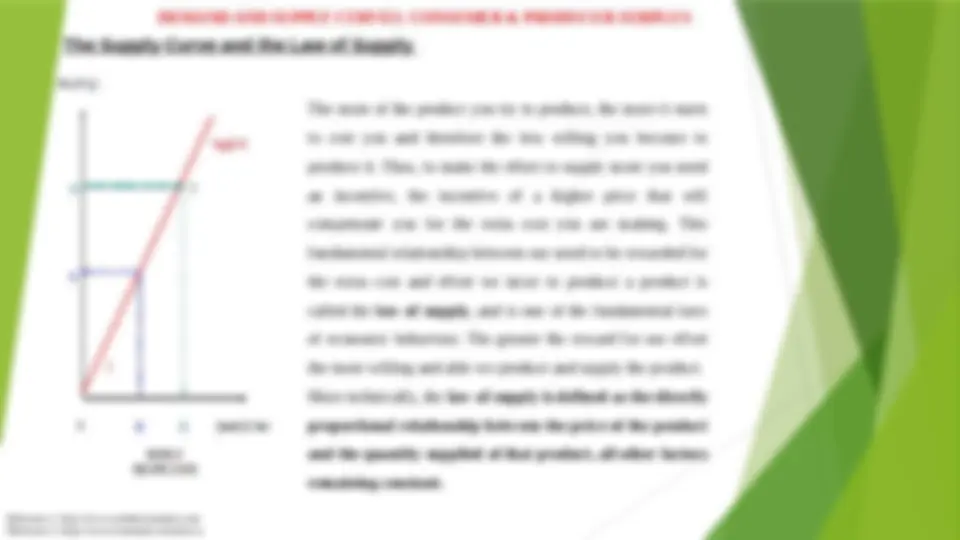

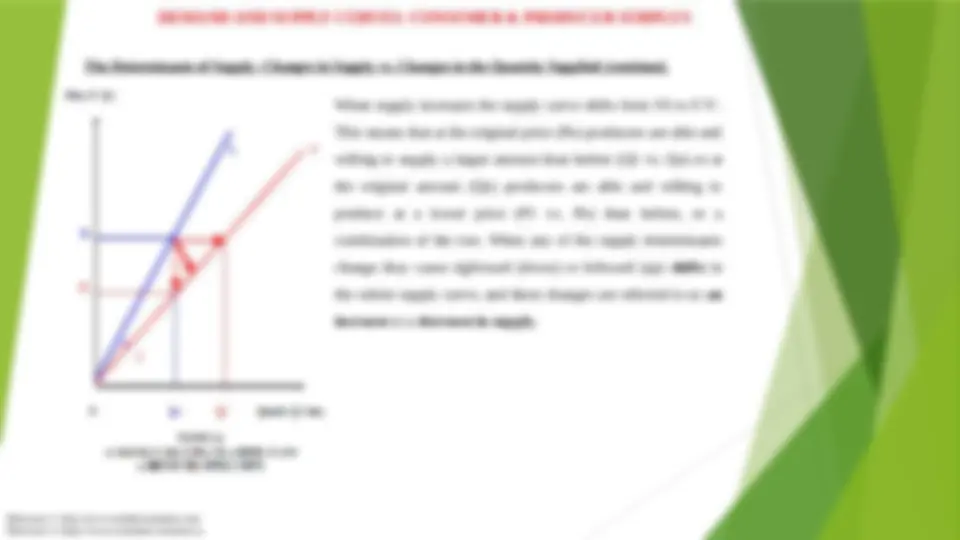
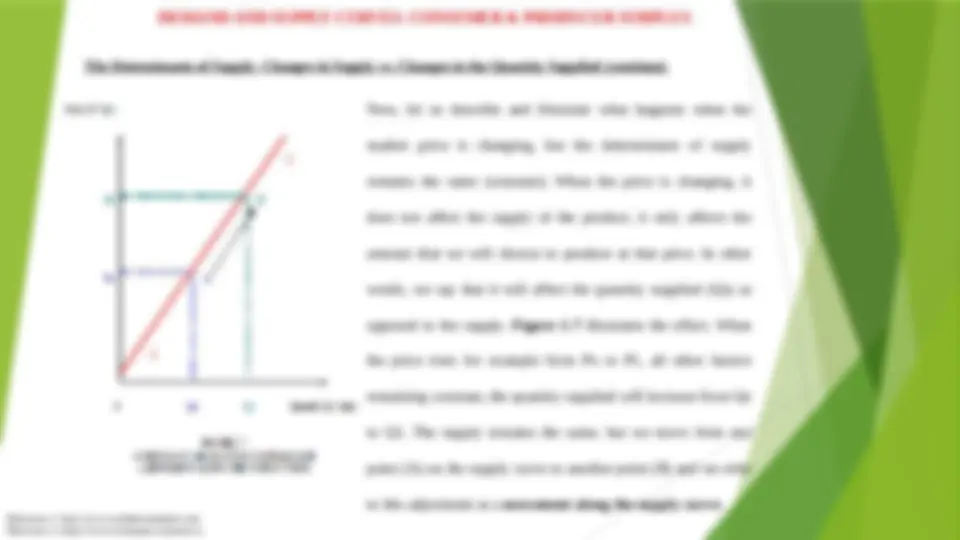

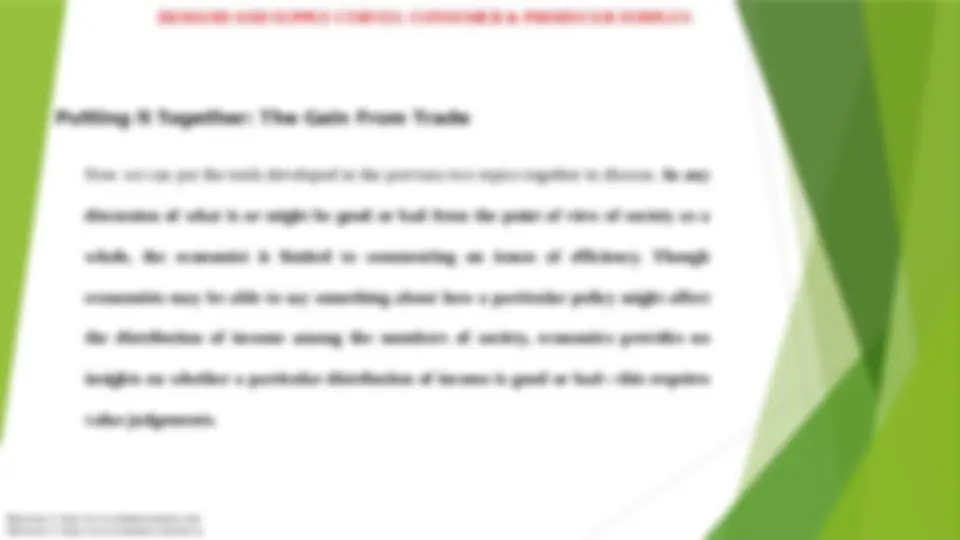
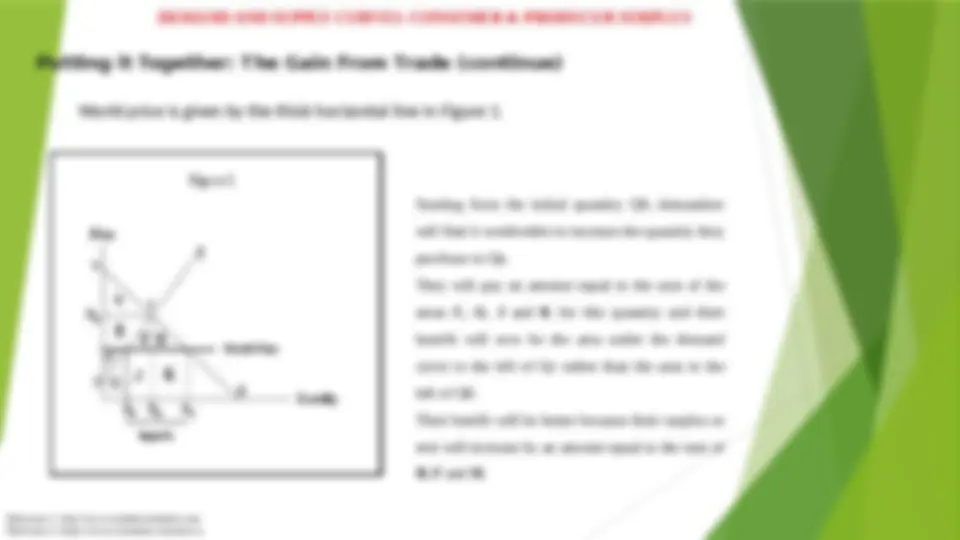
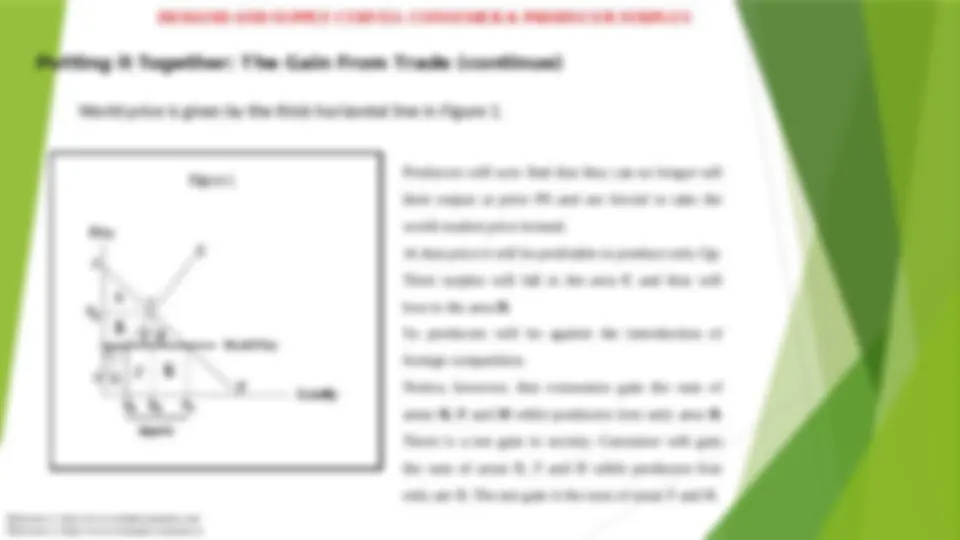
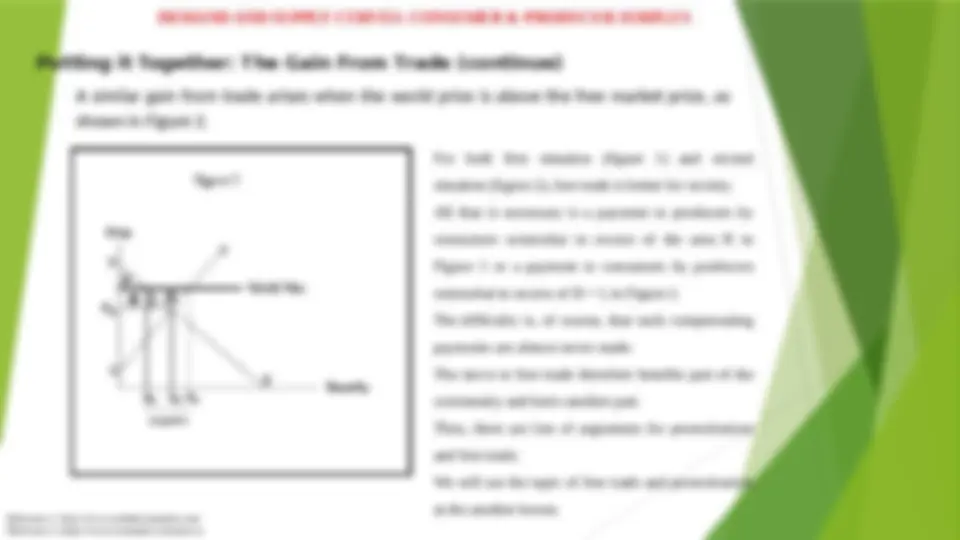


Study with the several resources on Docsity

Earn points by helping other students or get them with a premium plan


Prepare for your exams
Study with the several resources on Docsity

Earn points to download
Earn points by helping other students or get them with a premium plan
Community
Ask the community for help and clear up your study doubts
Discover the best universities in your country according to Docsity users
Free resources
Download our free guides on studying techniques, anxiety management strategies, and thesis advice from Docsity tutors
Selcuk University - Neba Wais Alqorni -International Economics (Week 1,2,3,4,5)
Typology: Assignments
1 / 18

This page cannot be seen from the preview
Don't miss anything!











The supply curve shows the minimum price a producer or the industry is willing and able to accept to produce an additional unit of a product from the first, to the second all the way to the last unit. The minimum price a producer is willing and able to accept to produce a given quantity (Qo) of a product is called the supply price (Ps). The maximum amount that an individual is willing and able to produce at a given price (Po) is called the quantity supplied (Qs). If someone asks you to produce amount Qo for a price less than Ps, you will refuse. If someone offers to pay you more than Ps to produce Qo, you will gladly do so, because they are offering you more money than the amount you are willing and able to work for. If they offer to pay you Ps, the amount you are just willing to produce, you will just take the job if you have no better offer available. Referance-1: http://www.canbekeconomics.com
Referance-1: http://www.canbekeconomics.com
The Determinants of Supply: Changes in Supply vs. Changes in the Quantity Supplied But what determines supply? The supply of a product depends on the available production technology and resources and our willingness to deploy them to supply the product. How much of a product we will supply in the short-run depends on the following factors: i) the production technology available to produce the product (Tech), e.g. a farmer using modern agricultural techniques such as fertilizer, tractors and harvesters can produce more than a farmer using traditional techniques employing a cow and a plough driven by hand; ii) the price (cost) of the resources needed to produce the product (Pr), e.g. the price of labour (wage rate), the price of capital (interest rate), the price of land (rent) the price of raw materials, the price of energy, the price of capital goods (machinery and equipment). The higher the price of these resources the less your ability to produce; iii) the goals of the producer, i.e. whether you want to maximize profit or sales or a combination of goals; iv) the price of other products that you can produce using the same technology and resources, e.g. a farmer can use the same land and resources to grow wheat and corn. If the price of corn is higher than the price of wheat, he will switch production from wheat to corn. v) the expectations of producers (E) regarding the future price of the product or related products, the price of resources, etc. vi) the number of producers or production establishments (N) in the industry, e.g. the more car assembly plants there are the greater the supply of cars will be; and finally vii) all other factors (O), such as weather, taxes, government rules and regulations, strikes, supply disruptions due to natural disasters, among others. Referance-1: http://www.canbekeconomics.com
Now, what happens when any one of the supply determinants changes, say a fall in the price of resources or an improvement in the state of production technology? What happens is that the supply will increase, that is a) we are willing and able to produce at a lower price than before, which lowers the supply price (Ps) or b) we are willing and able to produce a larger amount of the product at the same price which raises the quantity supplied (Qs) or most likely, c) a combination of the above. When there is a change in supply, the whole supply curve shifts out or shifts in, and the slope is likely to change as well. Figure 1-6 illustrates what happens when the supply increases: The Determinants of Supply: Changes in Supply vs. Changes in the Quantity Supplied (continue) Referance-1: http://www.canbekeconomics.com
When supply increases the supply curve shifts from SS to S’S’. This means that at the original price (Po) producers are able and willing to supply a larger amount than before (Q1 vs. Qo) or at the original amount (Qo) producers are able and willing to produce at a lower price (P1 vs. Po) than before, or a combination of the two. When any of the supply determinants change they cause rightward (down) or leftward (up) shifts in the whole supply curve, and these changes are referred to us an increase or a decrease in supply. The Determinants of Supply: Changes in Supply vs. Changes in the Quantity Supplied (continue) Referance-1: http://www.canbekeconomics.com
The Determinants of Supply: Changes in Supply vs. Changes in the Quantity Supplied (continue) Referance-1: http://www.canbekeconomics.com
Producer surplus is the “profit” the producer makes when producer pay money to produce goods and services. It is the difference between the market price the product is sold for and the minimum price the producer is just able and willing to work for and produce and supply the product. Referance-1: http://www.canbekeconomics.com
Now we can put the tools developed in the previous two topics together to discuss. In any discussion of what is or might be good or bad from the point of view of society as a whole, the economist is limited to commenting on issues of efficiency. Though economists may be able to say something about how a particular policy might affect the distribution of income among the members of society, economics provides no insights on whether a particular distribution of income is good or bad---this requires value judgements. Referance-1: http://www.canbekeconomics.com
Starting from the initial quantity Q0, demanders will find it worthwhile to increase the quantity they purchase to Q c. They will pay an amount equal to the sum of the areas C , G , J and K for this quantity and their benefit will now be the area under the demand curve to the left of Qc rather than the area to the left of Q0. Their benifit will be better because their surplus or rent will increase by an amount equal to the sum of B , F and H. Referance-1: http://www.canbekeconomics.com
Notice that people in the area consume quantity of Qc and produce quantity of Qp. The excess of Qc over Qp, is imported from the rest of the world. Domestic consumers now pay the amount C + G to domestic producers and the amount J + K to foreign producers, whereas previously they paid the sum of areas B , C , G , J and F to domestic producers.Briefly, if the world price lower than domestic price, consumers will want to free trade. Because, they will be gainer of trade. Referance-1: http://www.canbekeconomics.com
In this case production expands. Producers gain the area B + L + H and consumers lose the area B + L , with a net gain equal to the area H. The excess of Qp over Qc is exported. According to Figure 2 Producers gain the area B + L